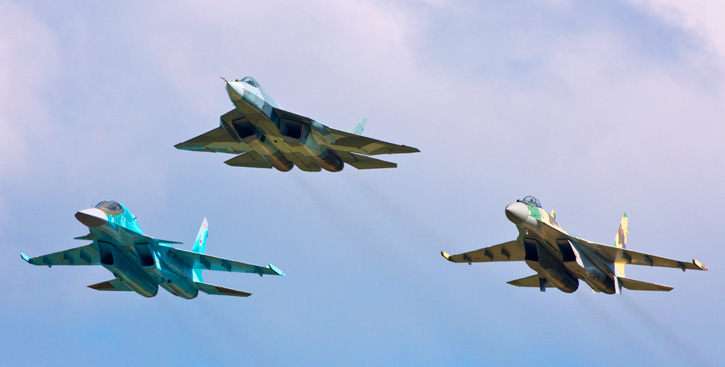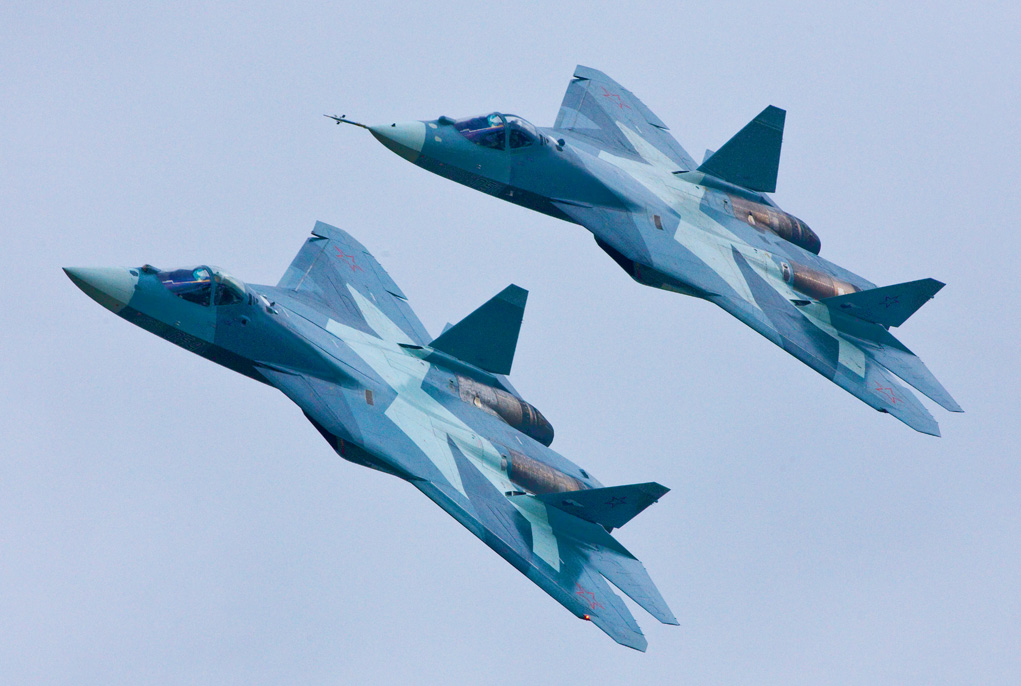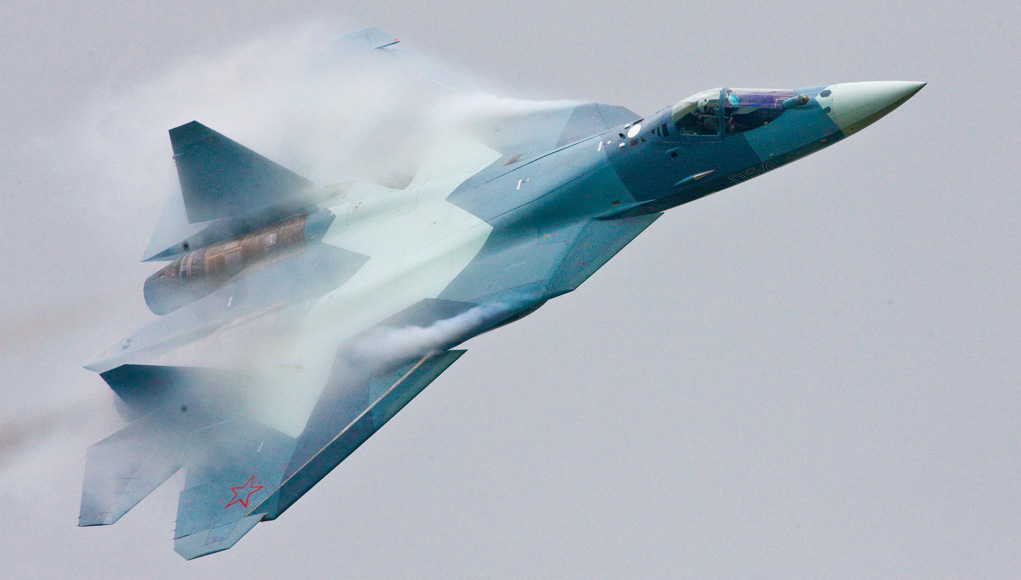What seems to be the final stage of negotiation between India and France over the procurement of 126 Rafale fighter jets is turning into a circus: New Delhi is walking on a tightrope, between approving the deal with a dramatic cost increase compared to the original budget, or ditching the plan, risking further delays in modernizing the Indian Air Force (IAF).
The current chapter in the three-year-long saga opens with orchestrated media reports auguring an accelerated induction of Russian SU-50E – an export version of the – the Indian variant of the Russian T-50 PAK-FA – which would mean a ‘generation leap’ over the current IAF first line fighter jets as well as over the GEN-4.5 Rafale.
While delivery of 18 fighters from France can be expected in time, the orderly delivery of the follow-on 108 locally produced aircraft is more questionable. It was Dassault’s concern about the Indian competency to produce these aircraft at a reasonable quality which brought the negotiations with India to a standstill. Sukhoi sees this as an opportunity, since they have already paved the way with the SU-30 MKI currently produced in India. Sukhoi hopes the production of SU-50E and SU-55 (the two-seat Fifth Generation Fighter Aircraft – FGFA) could continue where the production of SU-30 ends, providing a more manageable quality control process.
[nonmember]Subscribe to read the full analysis[/nonmember]
[ismember]

However, this new option is not less risky than the French plan. Unlike the Rafale, which is an operational aircraft produced on a hot production line, the SU-50 is still in development and flight testing, let alone the SU-55E (FGFA) which is a high-risk development project that has yet to be started. A possible near-term compromise, according to DefenseNews.com, could be the procurement of the SU-35S – an upgraded version of the ‘Super Flanker’ slated to enter service with the Russian Air Force this year. “We have been negotiating and have signed the intention protocol for the Su-35,” Rostec CEO Sergey Chemezov told Defense News last month at the IDEX exhibition in Abu Dhabi. “Now we are working on designing ideas for this contract and on creating a manufacturing platform for the aircraft of the fifth generation.” It is unclear what ‘fifth generation’ attributes this SU-35S would offer, as the majority of improvements introduced with this version are in its avionics.
Indian Air Force officials have ruled out the SU-30MKI as a replacement of hundreds of aging MiG-21s and MiG-27s currently in service. These aircraft are due for retirement in 7-8 years. However, the Su-35S has not been ruled out, given the high cost of the Rafale option, originally considered for this purpose.
Similar to the Rafale, and the SU-30s, the SU-50E program would see an initial delivery of Russian-produced fighters, with follow-on batches manufactured from Russian supplied kits and, later, from raw materials in India, following the necessary technology transfers the Russians have already agreed upon. According to a report in The Times of India, New Delhi told Moscow that it wants the shipment of the SU-50E to commence within 3 years of the signing of the contract, rather than the eight years originally planned for the SU-55. This date would be much closer to the scheduled delivery of the SU-50 to the Russian Air-Force – initial deliveries are expected by the end of 2016.
As of now, India would get its first SU-50E production delivery in 2020 and the SU-55 Indian produced versions, not earlier than 2024-2025. An earlier delivery time would reduce the level of work-sharing Indian companies would get on the Russian-made jets, although the reduction of work share would balance with the increased introduction of locally made materials.

The T-50 prototypes and initial production batch will be delivered with an upgraded variant of the AL-31F used by the Su-27/Su-30 family as interim engines while a new clean-sheet design powerplant is currently under development. The SU-50 is expected to have a service life of up to 35 years.
[/ismember]
If this deal goes forward, the SU-50E is expected to be delivered from 2017 onwards with the IAF expected to induct over 300 aircraft in the following two decades at a cost of US$25 billion. This is an extremely ambitious schedule, as the Russians themselves do not expect to receive their first SU-50 before the end of 2016. Currently undergoing flight testing as T-50 prototypes, the Russian Air Force expects forming 2-3 squadrons of fifth generation SU-50 by 2020.
The Indian export variants of the SU-50/55 are the biggest-ever bilateral Indo-Russian defence cooperation project. The preliminary design agreement on SU-50ES (FGFA), signed in 2010 between HAL and Russian Sukhoi Design Bureau, was to build the jet for use by both countries, with India investing 50 per cent of the cost of the multi-billion dollar programme.




















